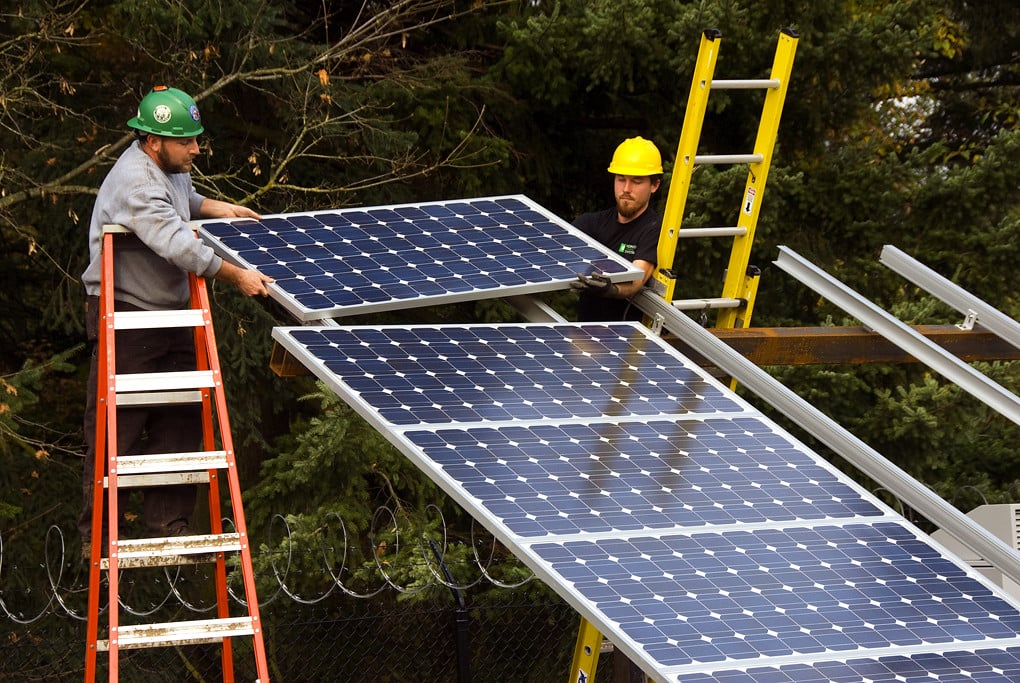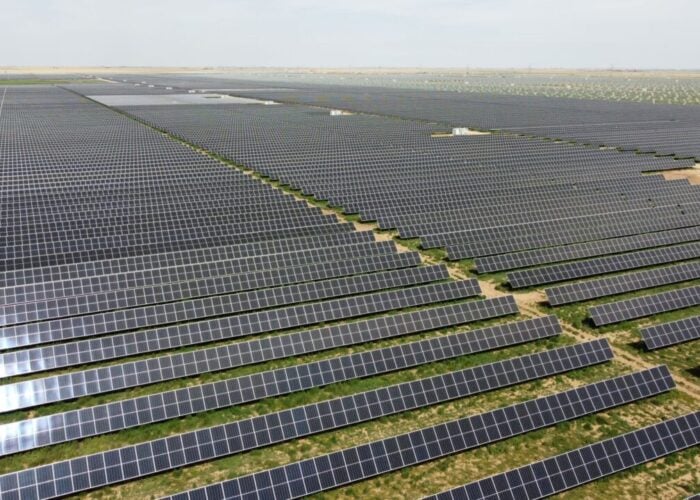
US clean energy operators have ramped up calls for federal help against the COVID-19 crisis after a new review found job losses in April were “a lot worse than expected”.
E2, ACORE, E4TheFuture and BW Research Partnership had warned in mid-April that US clean energy firms could shed a cumulative 500,000 jobs “in the coming months”. This week, their update confirmed that the job loss threshold was not only reached, but amply exceeded, in a matter of weeks.
Unlock unlimited access for 12 whole months of distinctive global analysis
Photovoltaics International is now included.
- Regular insight and analysis of the industry’s biggest developments
- In-depth interviews with the industry’s leading figures
- Unlimited digital access to the PV Tech Power journal catalogue
- Unlimited digital access to the Photovoltaics International journal catalogue
- Access to more than 1,000 technical papers
- Discounts on Solar Media’s portfolio of events, in-person and virtual
Or continue reading this article for free
If 147,139 US clean energy workers filed for unemployment benefits in March 2020, some 447,200 followed suit in April 2020, according to the review. The cumulative figure of 594,300 means the sector – employing 3.4 million at the end of 2019 – has lost twice the jobs it had gained since 2017.
The segment-by-segment breakdown (see below) reveals energy efficiency workers were hit the hardest in absolute terms in April. As a share of the entire workforce, however, the job losses over the month in renewables (13%), energy storage (14%) and clean fuels (26%) were sizeable.
US clean energy job losses in March and April 2020, per segment
| Energy efficiency | Renewable energy | Clean vehicles | Grid & clean storage | Clean Fuels | All segments | |
|---|---|---|---|---|---|---|
| Job losses in March 2020 | 103,298 | 23,739 | 11,339 | 6,517 | 2,186 | 147,139 |
| Job losses in April 2020 | 310,188 | 71,835 | 35,101 | 19,685 | 10,398 | 447,208 |
| Two-month total | 413,486 | 95,574 | 46,501 | 26,202 | 12,584 | 594,347 |
Source: E2, ACORE, E4TheFuture and BW Research Partnership
The review’s authors joined in describing the findings as “worse than expected”. E2 executive director Bob Keefe said: “Americans in every state – red, blue, purple – are losing clean energy jobs across a wide swath of occupations – electricians, technicians, installers and factory workers”.
Meanwhile, Gregory Wetstone, CEO of clean energy association ACORE, said help from the US Congress in the form of tax credit relief – an area the Treasury has signalled a will to reform – would allow the sector to bounce back, following the “unprecedented blow” from COVID-19.
Continued inaction could see job losses spiral to reach a total of 850,000 by the end of June, E2 and the others warned. Should it materialise, the scenario would mean a quarter of the workforce the US clean energy sector boasted at the start of 2020 would be gone within six months.
As was the case in March, the data on unemployment filings for April 2020 suggests that ethnic minorities bore a disproportionate brunt of job losses last month. For instance, Hispanic and Latino workers represented a 14% share of the clean energy workforce but accounted for 25% of job cuts.
Hardest-hit US states for clean energy job losses, March-April 2020
- California: 27,583 job losses (March 2020), 77,860 (April 2020), 105,443 (Two-month total)
- Texas: 5,965 job losses (March 2020), 25,227 (April 2020), 31,192 (Two-month total)
- Michigan: 7,867 job losses (March 2020), 22,284 (April 2020), 30,150 (Two-month total)
- Florida: 3,963 job losses (March 2020), 25,915 (April 2020), 29,878 (Two-month total)
- Georgia: 1,909 job losses (March 2020), 25,251 (April 2020), 27,161 (Two-month total)
Source: E2, ACORE, E4TheFuture and BW Research Partnership
In a repeat of the trends seen in March, California – home to some of the country’s top solar players – was the worst-hit state in absolute terms, going on to record nearly one-in-five US clean energy job losses nationwide.
Job cuts were also significant over in Kentucky, Hawaii and Louisiana, with workforces shrinking by more than 25% across each over April alone. At 31%, Georgia saw the largest relative losses and doubled the 15% average recorded US-wide.
The talk by E2 and others of a tough Q2 tallies up with the expectations of individual solar players. From Sunrun to Vivint Solar and SolarEdge, the names part of the recent flurry of financial updates all expected a solid Q1 to lead to a performance slowdown in Q2.
With the US as leader of global COVID-19 rankings – with 1,390,000-plus virus cases and 84,000-plus deaths reported at the time of writing – solar currently faces the prospect of new presidential elections in November, after years of protectionist policies from the current administration.
PV Tech has set up a dedicated tracker to map out how the COVID-19 pandemic is disrupting solar supply chains worldwide. You can read the latest updates here.
If you have a COVID-19 statement to share or a story on how the pandemic is disrupting a solar business anywhere in the world, do get in touch at [email protected] or [email protected].







